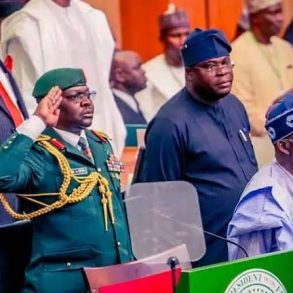Tribal marks are specific traditional marks called Ila in Yoruba language, they have been around for about (as reported) 200years when they became the vogue, they were used primarily for beautifying the face and body, there is this saying “tita riro lan’ko ila, toba jina tan adi oge” (Translated as the process of having a tribal mark is arduous but when it heals, it becomes fashion). Ila was also used for societal norms and identification during the slave trade era where it was used for identifying persons, families, lineages, and sub-ethnic groups.
- It is crafted normally on the cheek but some are crafted on other parts of the body particularly the abdomen, arm and the back. Some Ilas are drawn out of religious reasons and purposes and are called ‘Gbere’, some as ancestral marks whereby, humans were purportedly believed to have spiritual links with the dead once they wear a certain mark.
- Different patterns are accustomed with different sub-ethnic groups in Yorubaland.
HOW IT STARTED
- No one can specifically say when the art of tribal marks began among the Yoruba. However, according to Johnson (1921:149-150), Sango (one of the past kings of Old Oyo) wanted to worship at the burial ground of his mother and he could no longer remember her name because she died when he was a baby.
- His mother was the daughter of Elempe, a Nupe king, who formed an alliance with Oranyan by giving him his daughter as a wife and Sango was the result of the union.
- He, therefore, commissioned a Tetu (a sheriff or king executioner) and a Hausa slave to proceed to Tapa country for the purpose of giving them a horse and a cow for the sacrifice.
- They were warned to listen attentively to the first name to be uttered during the invocation which would be the name of his mother. When his grandfather i.e. Elempe saw the duo, he entertained them very well and the Hausa slave became drunk but the Tetu was very careful. At the time of the invocation, the priest who performed the sacrifice said; “Torosi, mother gbodo, listen to us thy son Sango is come to worship thee”.
- The Hausa slave who was blind drunk did not notice the name but the Tetu who was cautious heard the name and memorised it. On getting to Oyo, the Tetu who was faithful with the assignment was abundantly rewarded while the Hausa slave was given one hundred and twenty-two (122) razor cuts all over his body in order to serve as a deterrent to others in future.
- After the healing of the scars, the Hausa slave appeared more handsome than before and this took the fancy of the king’s wives who suggested that such marks should not be made on slaves but on the royal family as distinctive marks of royalty. Sango followed the advice of his wives and submitted himself for tribal marks too.
- The markers were Babajegbe Osan and Babajegbe Oru but he could only stand two cuts on the two arms and prevented them from making more marks on him. This is what is called Eyo marks and are reserved solely for the royal family of Oyo and for this reason, members of the royal family are called Akeyo. They are two broad ribbon marks on the arms from the shoulder to the wrist.
Moreover, it is said that Obemawe of Ondo and Ebumawe of Orile-Iwoye were twins. When Obemawe, the younger of the two had established himself properly as the king of Ondo, he wanted to know the marks on the cheeks of the children of his twin brother.
- He, therefore, sent a servant to Orile-Iwoye. But on getting there, he was not given a befitting welcome because he was only given some water to drink. However, before he left, he noticed that his children wore pele marks on their cheeks.
- He left for Ondo and when he got home, he was given a rousing welcome but he was too tired to talk. They asked him the marks on the cheeks of the children of Ebumawe and he used his hand to draw long marks on both cheeks and this makes their tribal marks to be different from others.





